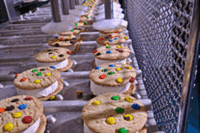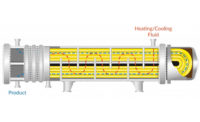Meet the panel
Dan Björklund, Manager, Dairy Chilled & Fermented Solutions, Tetra Pak, Lund, Sweden
John C. Bohn, Founder and Director of Sales and Marketing, AGC Heat Transfer, Portland, Ore.
Rick Earley, Beverage and Dairy Market Manager, Admix, Greensboro, N.C.
Carl Lemke, Business Development Manager, Heat Exchangers, Alfa Laval, Kenosha, Wis.
David M. Miles, Vice President, MicroThermics, Raleigh, N.C.
Bill Snow, Technology Group Manager, SPX Flow Technology Systems, Delavan, Wis.
Heat exchangers are key components in a dairy processing plant that can directly affect food product quality, a supplier tells Dairy Foods. Other suppliers tell us that pasteurizers are not all alike. To learn more about processing milk and the equipment that is used, we convened a “virtual roundtable” of equipment manufacturers. What follows are edited remarks received via e-mail.
Dairy Foods:True or false: A pasteurizer is a pasteurizer is a pasteurizer. What key points are important for a dairy processor to know about pasteurization equipment?
David M. Miles: This is definitely not true. While reaching a qualified hold time and temperature will ensure that the product is truly pasteurized or sterilized, the heating rates and cooling rates have a huge affect on product quality. This is especially true in UHT- and aseptic-processed products.
Essentially, the heating (and to a smaller extent, cooling) rates actually have a larger impact on the quality of the product. So, it might be properly pasteurized or sterilized, but the process will affect the palatability of the product.
We see this often when working with clients because they have variability in product quality from one processing location to another. In the end, we simulate both to enable them to make a formulation that is robust enough to provide the product identity they need. This can include not just organoleptic qualities, but nutritional qualities as well.
We have even worked with clients who end up changing one or more production lines so that they all have the same or similar heating profiles so that they can have control over their product quality.
John C. Bohn:False. In the sanitary plate heat exchanger field there are obvious differences in surface finish, plate gap, plate thickness and after-sales support. Cleaner-looking bright anneal (BA) surface finishes (not a dull 2b finish) allows processors to easily determine if they’re getting a good CIP (clean-in-place) response.
Plate gap (the distance between the plates) and a viscous and CIP-friendly inlet design is important for extending the run times and/or reducing operating pressures with viscous products.
Dan Björklund: In the past, dairy pasteurizers have often been regarded more or less as commodities, simply a plate heat exchanger with a pump and a holding cell. But is it really that simple?
Growing price pressure on milk and increasing energy costs are forcing processors to focus on the total cost of ownership. When all these costs are taken into account, the differences between pasteurizers can be significant.
The focus on food safety is also growing. Where pasteurizers are concerned, differentiating factors will obviously concern both the cleanability of pasteurizer design and the uniformity of performance, that is, to consistently deliver a process that fulfills pasteurization criteria.
But there is also another key factor. The role of pasteurization in the value chain is just one step, so producers are increasingly recognizing the value of focusing on an entire solution, from raw milk intake to the packaged product, with uncompromising food safety and full traceability throughout. When this can be achieved with a low total cost of ownership, there is suddenly no such thing as “just a pasteurizer.”
Carl Lemke: False. Key points [about pasteurizers] have not changed much over the years. They are:
- Thermal and mechanical impact of the design on product quality
- The cleanability of the system
- Reliability of the equipment
- Energy savings in form of heat recovery achieved
- Overall operating efficiency and reliability
Particular attention should be paid to the last points, given the cost of energy and costs associated with downtime and repairs.






